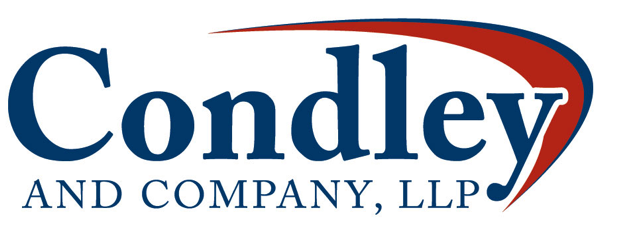
As February drew to a close, a variety of topics – oil prices, interest rates and 401(k) investment fees – dominated the financial news headlines in the United States. On the international front, a conditional agreement by Euro-zone nations to extend bailout help to Greece avoided a showdown and helped bolster major stock indices.
Oil Prices
The whip-saw in energy stocks continued in February. There was a rally in the sector after escalating violence in Libya and Iraq – both major oil producers – hit the news. However, this quickly was reversed mid-month after the American Petroleum Institute estimated an inventory upswing of more than 14 million barrels – an increase significantly higher than the additional 3 million barrels forecasted by industry experts. Total U.S. inventories were pegged at a record high of 418 million barrels at the end of the first week in February. The fall in oil prices also helped push down major oil stocks and dragged both the Dow Jones Industrial Average and the Standard & Poor’s 500 down from their recent record highs.
401(k) Investors Await Supreme Court Ruling
The many U.S. investors who participate in 401(k) plans are expected to reap the benefits from the ramifications of a class-action lawsuit that highlights an employer’s responsibility to seek the best deal in investment fees. The landmark case – Tibble v. Edison (the California-based utility company) – alleges mismanagement specifically involving overpriced fees for 401(k) plan participants. It is one of a number of similar lawsuits filed against financial companies and other corporate institutions.
Although this particular case, which is the first to reach the Supreme Court, now centers on a statute of limitations, lower courts have agreed that Edison did not act in the best financial interests of its plan’s participants when it opted for “retail class” shares rather than less expensive “institutional class” shares. It is this aspect of the lawsuit that has seized the attention of advocates of 401(k) plan participants and individual retirement savers. Groups like these are supporting efforts to make companies demonstrate “fiduciary responsibility” and act in the best financial interests of their employees.
The Federal Reserve
Analysts and investors were keen to hear Fed Chairwoman Yellen’s semi-annual report to the Senate Banking Committee to gain more clarity on the ever-present issue of the timing of interest rate hikes. The Fed is walking a fine line – trying to back off from the forward guidance it has used previously to support the markets without provoking an overreaction when discussing future interest policy changes. Yellen’s presentation did not do much to clarify analysts’ understanding of when interest rate hikes might begin. Yellen spoke of economic indicators that had been increasing at a solid rate, but countered this with references to continued concerns over low wages and a global economy that remains weaker than hoped. Bearing in mind last month’s knee-jerk response to her statement on rate increase timings, Yellen avoided saying that target interest rates would increase “in a couple of meetings.” Instead, her language indicated she is not ready to signal that a rate increase is imminent.
The remarks above are intended as general commentary and are not intended to replace specific advice and counsel from tax and investment professionals.
Lesser Known Trusts Can Create Big Tax Savings
The big issue for tax planning with trusts is who gets the tax liability. Different trusts attach the tax liability to different sources. This is important because it determines how the trust impacts income taxes versus estate and gift taxes.
There are two types of lesser known trusts – Intentionally Defective Grantor trusts (IDG) and Incomplete Gift Non-Grantor trusts (ING). Each attaches the tax liability associated with the assets and the income they produce to different sources.
IDG trusts are often used by well-off families to reduce the gift and/or estate tax paid during a shift of assets from generation to generation. This type of trust allows the parents make a gift to their children while they are still deemed the owners for the purpose of income taxes. Transferring a gift in the present instead of at the time of death creates a situation where the value that the gift tax is imposed on in the present will be significantly lower than the estate tax that would later be imposed at death (assuming the asset appreciated in value). Sometimes known as an estate freeze, this maneuver can provide large tax reductions; however, they also produce another benefit.
IDG trusts are called “intentionally defective” for a reason. This type of trust purposefully makes a defect to stop the completion of the gift for income tax purposes. In situations where the family overall will owe income tax on trust assets, it allows the parents to pay the income taxes now and reduce the ultimate size of their estate. This can be helpful since assets transferred via the estate are often taxed at a higher rate than the decedent’s income rate.
A related trust is the Incomplete Gift Non-Grantor trust. An ING tries to accomplish the opposite of an IDG. ING trusts create a transfer that is completed for income tax but not for estate tax purposes. In this case, the parents are the beneficiaries of the trust.
Take the situation where the parents have assets and they want to keep ownership. Also, assume the parents have significant income from investments or plan to incur a gain from the sale of a business. In situations like this, an ING trust can become a valuable planning device.
With an ING trust, the parents no longer own the assets for purposes of income taxes and the trust becomes its own taxpayer. Additionally, since the trust acts as a separate taxpayer, it can have its own domicile that can be set up in a state lacking any tax on income. As an example, assume the state you live in has an 8 percent income tax rate and you have $80,000 of interest income. If you transfer the interest income producing asset into this type of trust domiciled in a state without income tax, you would save $6,400 per year.
Does this sound too good to be true? Consider that the Internal Revenue Service first recognized the ING trust structure in 2001 via a private letter ruling. Since then, there has been substantial case law in the U.S. tax and appellate courts affirming this trust structure.
The remarks above are intended as general commentary and are not intended to replace specific advice and counsel from tax and investment professionals.
